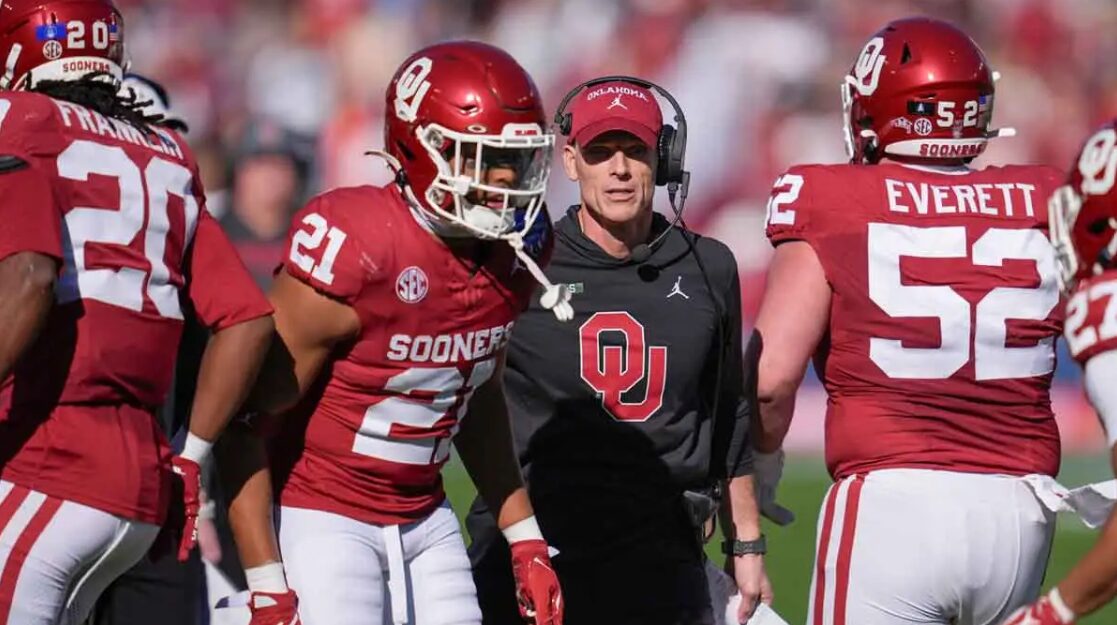Huge Boost For the Oklahoma Sooners Football
The Oklahoma football team has landed some of the best transfers in the country, but there is still more talent out there.
Brent Venables is gearing up for what could be his most pivotal season yet as head coach of the Oklahoma Sooners. Now entering his fourth year at the helm after serving as Clemson’s defensive coordinator, Venables is still searching for consistent success in Norman. While the Sooners posted a 10-win campaign in 2023, falling short of the College Football Playoff—especially after a strong start—left many fans feeling underwhelmed.
As Venables aims to turn the corner, the transfer portal has become a vital tool in reshaping the roster. In today’s college football landscape, it’s rare for teams to pass on the portal unless they’re returning a full slate of proven starters. With the level of experienced talent available, the portal gives programs a chance to reload quickly and remain competitive.
For Oklahoma, this offseason was critical—and so far, they’ve made notable progress. After a disappointing 6-7 finish in two of Venables’ three seasons, the Sooners are looking to build momentum. Though the team lost 34 players to the portal, they’ve brought in 21 new additions, including some major names like quarterback John Mateer and running back Jadyn Ott.
Despite their success so far, the Sooners may not be done just yet. While the window is closing on the current portal cycle, there are still a few intriguing prospects who could further bolster Oklahoma’s roster.
Cortez Braham Jr., WR, Nevada
Wide receiver was a key need for Oklahoma entering the spring portal window, and they’ve addressed it well. Still, Cortez Braham Jr. stands out as a name to watch. Originally starting his college career at West Virginia, Braham transferred to Nevada for the 2024 season and delivered a strong performance—56 catches for 724 yards and four touchdowns. With his experience and productivity, he could be a valuable addition.
Markevious Brown, CB, Purdue
Another area of need is cornerback, and Markevious Brown brings plenty of experience to the table. A veteran of four seasons at the Power Four level, Brown began at Ole Miss before transferring to Purdue. His standout 2023 season included 45 tackles, five pass breakups, two forced fumbles, and a sack. Brown’s combination of experience and production makes him an appealing target for any coaching staff looking to solidify its secondary.
Nathan Leacock, WR, Tennessee/Purdue
Nathan Leacock: A High-Upside Option
While Nathan Leacock doesn’t bring much experience to the table, he’s still a player worth watching. The wide receiver began his college career at Tennessee but saw limited action as a freshman. After the season, he transferred to Purdue—but his time with the Boilermakers was short-lived, as he’s already back in the transfer portal. Adding Leacock would be more of a gamble for Oklahoma, but the former four-star recruit originally landed at an SEC school for a reason. He’s a raw talent with considerable upside.
Transfer Portal Overview
The transfer portal has become one of the most important elements of the college football offseason—and it often starts making waves before the season officially ends. Programs that miss out on bowl games begin their offseason early, and as a result, are active in the portal as soon as it opens. Meanwhile, schools still preparing for bowl games or playoff runs must navigate the added challenge of managing roster movement during critical weeks.
This past season, the first transfer window opened on December 9 and closed on December 28. While the early opening allows players to enroll at a new school in time for the spring semester, it also brings complications—especially for those on College Football Playoff teams. Several players have had to sit out postseason action after entering the portal, highlighting a key issue with the system’s timing.
Despite the drawbacks, the portal gives programs the opportunity to transform quickly. For teams under new leadership or coming off disappointing seasons, the portal can be a fast track to competitiveness. The ability to bring in experienced players in one offseason has become a game-changer across the country.
A second transfer window also opens in the spring—from April 16 to April 25. This allows players to evaluate their roles after spring practices and make new decisions if they feel a better fit lies elsewhere. It’s not uncommon for players who transferred during the winter to re-enter the portal in the spring, and in some cases, even return to their original team.
Ultimately, the transfer portal is now an essential part of the college football landscape. Expect it to remain a dominant storyline through the end of spring and into the lead-up to fall camp.



No Comment! Be the first one.